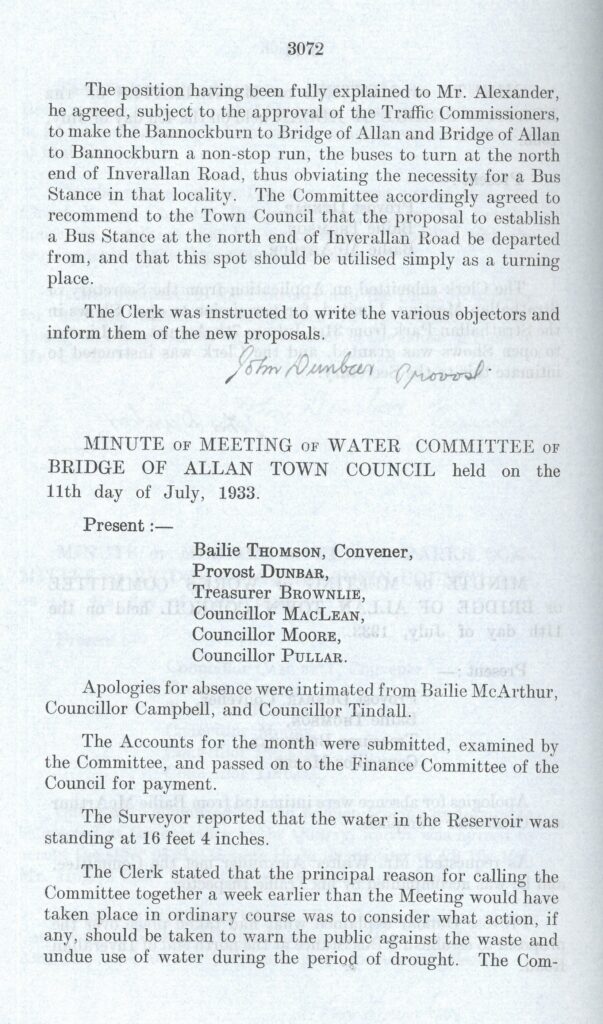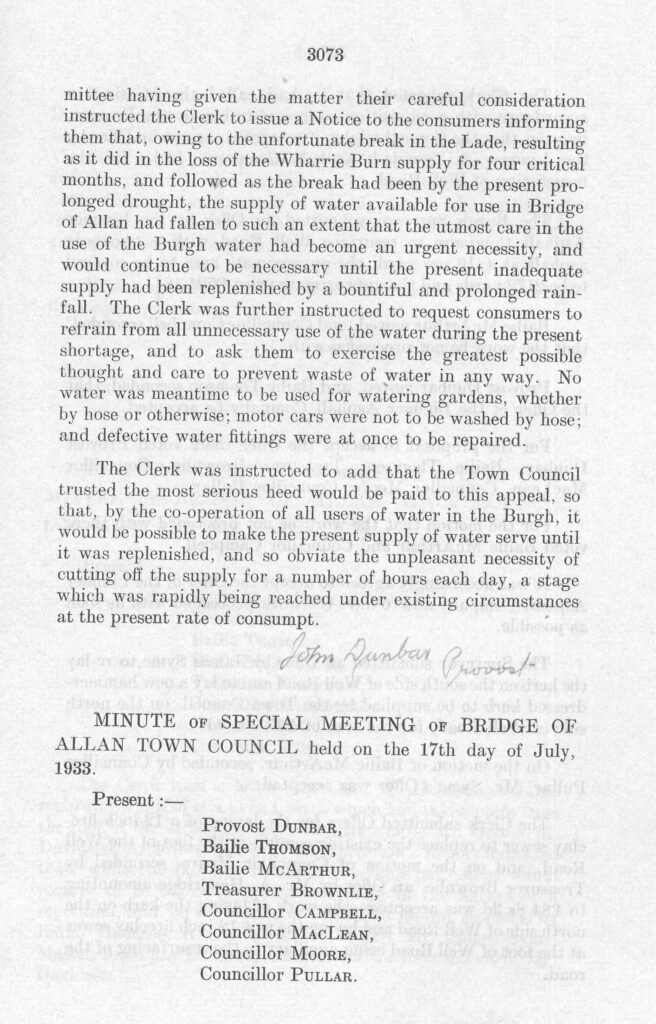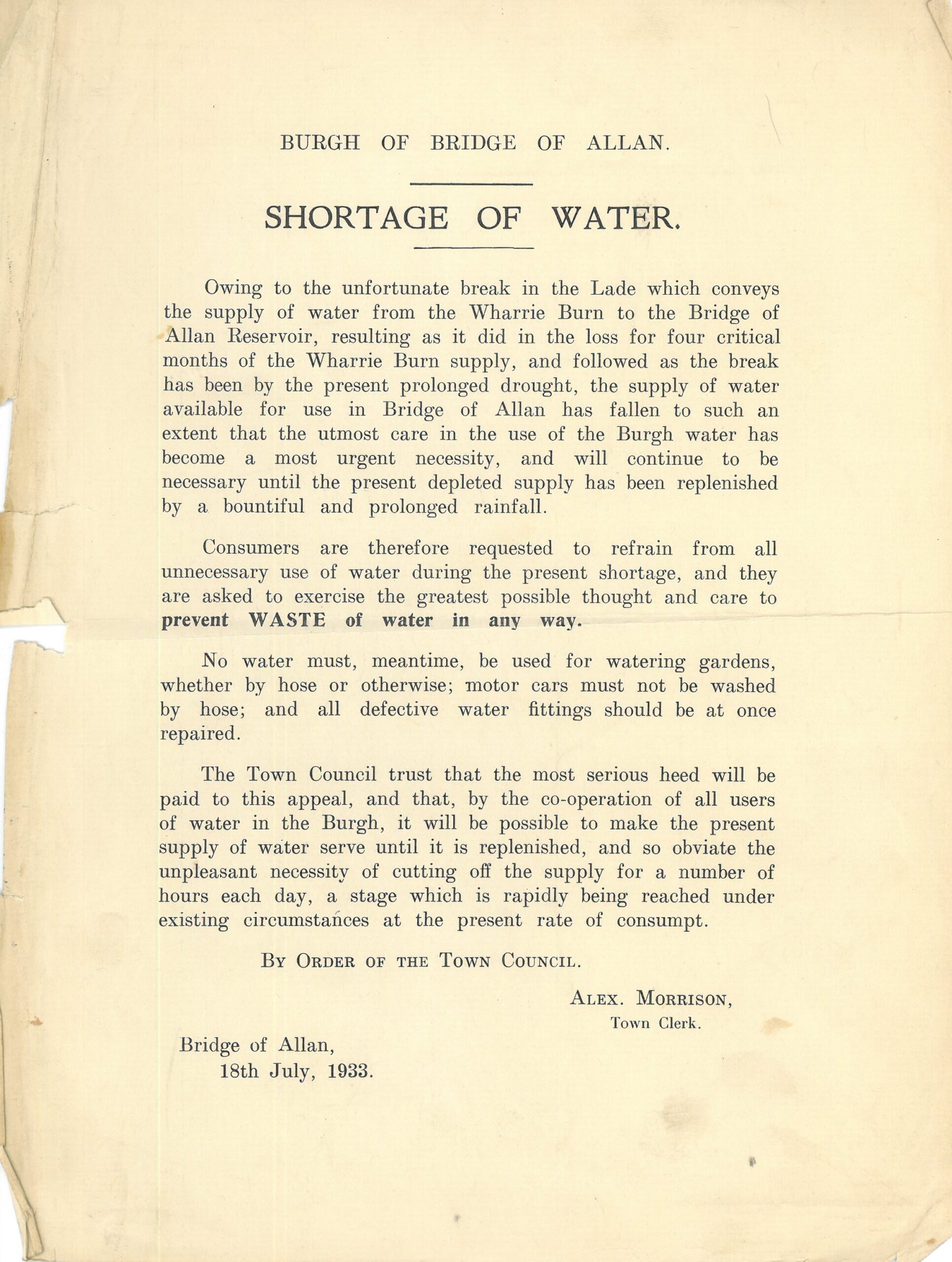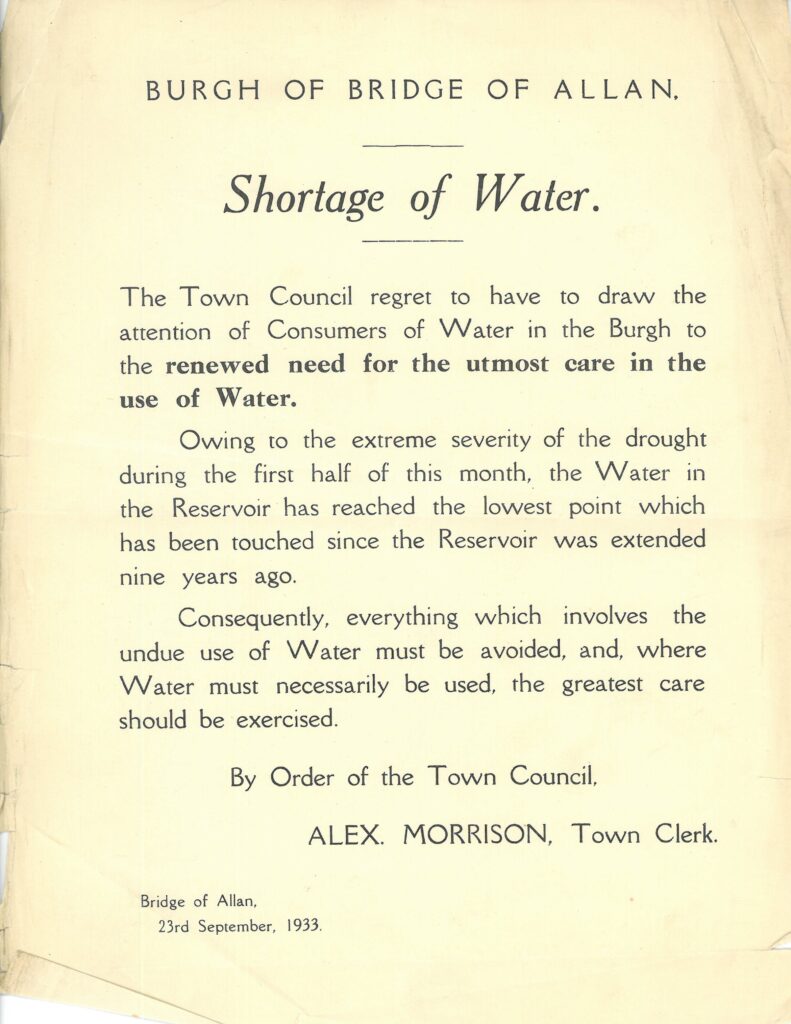Scotland is definitely known for its rainy weather and although most of us will have enjoyed the sunshine we recently had, there was a time when the rain was sorely missed. In 1933, the Burgh of Bridge of Allan suffered a prolonged drought that severely depleted Cocksburn Reservoir’s water supply. In keeping with the second year of Scotland’s Coast and Waters, the Document of the Month for August will take a look at the Bridge of Allan Burgh Water Committee’s appeals to the public to conserve water during the drought.
In January of 1933, the surveyor of the Water Committee in Bridge of Allan Burgh reported the water in the reservoir to be overflowing at a level of 25 feet and 9 inches. However, soon after, severe damage to a portion of the reservoir’s lade leading from Wharrie Burn (also spelt as Wharry Burn) to the Bridge of Allan Reservoir and Airthrey Loch was discovered on the 18th January. The lade was responsible for carrying water to the reservoir and would need to be repaired as quickly as possible in order to meet water demands in the approaching summer. Water levels did remain at a comfortable level for some months despite the damage, with the surveyor reporting them to be at 21 feet and 10 inches on the 16th May 1933.
It was not until an emergency meeting of the Water Committee was called on the 11th July 1933 that the committee decided an urgent appeal to the public was needed, by this point the water level had dropped to 16 feet and 4 inches. Owing to the break in the lade, which resulted in the loss of water from Wharrie Burn for four months, followed by a prolonged drought, the water levels in the reservoir had dropped to the point where the utmost care was needed in regards to the public’s water usage. On 18th July 1933, a public notice was issued by town clerk Alexander Morrison by order of the Town Council, urging people to prevent the waste of water in any way they could. This included not watering gardens, washing cars and repairing any defective water fittings.
BBA/30/2: Bridge of Allan Burgh Public Notice – Water Shortage, 23 Sep 1933 (right)
On the 19th September, the surveyor reported to the Water Committee that the continued drought had caused the water levels to drop even further to 13 feet and 7 ½ inches, the lowest it had been in nine years. Yet another public notice was issued on the 23rd September 1933, reiterating the previous message from July that great care was needed when using any water.
Less than a month later, the eagerly anticipated rainfall and repair of the lade meant the water supply was saved and the committee agreed to withdraw the embargo on the unlimited use of water at a meeting held on the 17th October, at which point the water supply had risen to 17 feet before increasing even further to 25 feet and 5 ½ inches by December 1933. At the surveyor’s recommendation, the water was submitted for analysis and was found to ‘be free from all impurities of any kind’ making it completely safe for public use.



